Up Next

Carlos Sainz, pole at Monza in a Ferrari, a dream day which he will surely long remember. In the process he’s put Red Bull on the back foot, Max Verstappen falling short by 0.013s and pincered by Ferraris, with Charles Leclerc right behind.
Given that Sergio Perez qualified the second Red Bull only fifth (behind George Russell’s Mercedes), it potentially gives Ferrari a useful two-onto-one dynamic as it bids to prevent Verstappen stretching his unbeaten run to a new all-time record of 10.

But in strategic terms, that dynamic is only of any value if the Ferrari has comparable race pace. On the evidence of the season to date that looks unlikely, something Sainz acknowledges even if he is up for ‘keeping the dream alive’.
On the surface it may seem incredible that a Ferrari which was so far off the pace at Zandvoort just last week should be the pacesetting car here in qualifying. But Monza’s circuit layout could hardly be better configured to play to the Ferrari’s two strengths – strong straightline speed and great slow-corner balance (the same combination which put Leclerc on pole in Baku).
As a generalisation, in the season to date the Red Bull’s race day advantage has been much bigger than that of qualifying. As we’ve explained here before, it’s probably a consequence of the big anti-squat front suspension geometry – which is an intrinsic part of the car’s aerodynamic excellence but which can often have the front tyres a little under-temperature at the beginning of a qualifying lap.
The RB19’s underlying superiority has still usually allowed it to be good enough for pole despite the compromise over a single lap. But come to a track rewarding both of the Ferrari’s key strengths and it seems that small Red Bull qualifying advantage can even be overcome. But not without a fight.
Wing choices
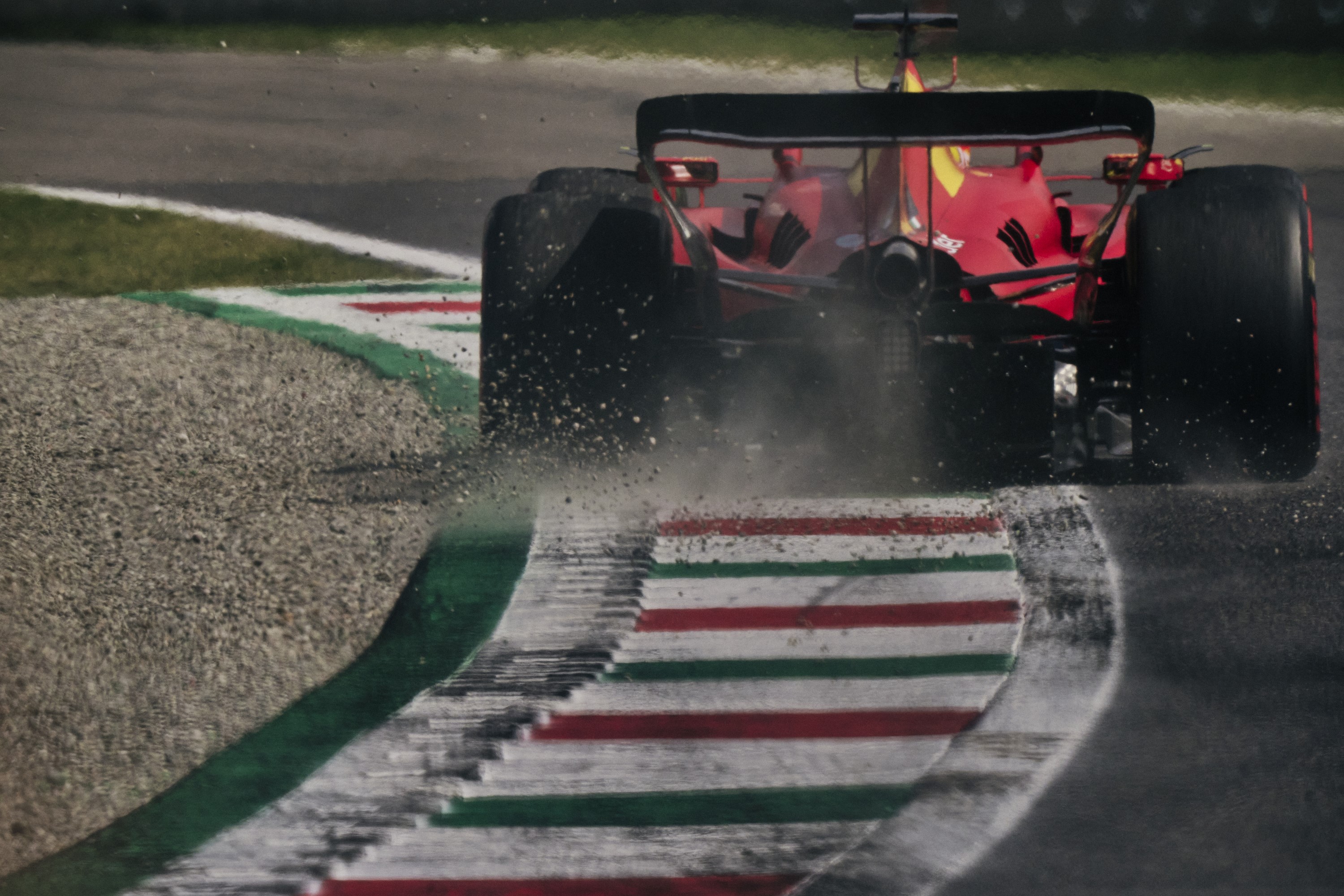
There was another key factor in why Ferrari fell the right side of that hundredth of a second difference and Red Bull the wrong.
Ferrari played to the strength of its car in coming here with the smallest rear wing feasible. It has exaggerated one of the car’s two key strengths while relying on the other one – that great slow-corner rotation – to minimise the damage the loss of downforce inflicts. That straightline speed and rotation combined with the Red Bull’s difficulty with the front tyres for the two slow chicanes at the start of the lap gave the Ferrari a crucial head start – which the Red Bull’s greater grip through Lesmo 2, Ascari and Parabolica couldn’t quite overcome. But it required Sainz to really nail what the Ferrari had to give in those faster corners – and he was super-committed into Ascari and Parabolica.
“You have such a light feeling with the car here that you are never really willing in practice to take the car to the absolute limit,” said an elated Sainz, “and I’ve had a few good Q3 laps here in the past and I know that if you get a really good run through Ascari and Parabolica it can be worth a lot.
“You have to just remove that fear from your head when the time comes, just go into these two fast corners where the car feels incredibly light and you just hope it grips – and it did. The car has felt good all weekend through there, giving me the confidence to push when I needed to. It was all about the details and risk going into the second run.”
Leclerc began the weekend with a very different mechanical set-up to Sainz. It didn’t work and he converted wholesale to Sainz’s set-up from Saturday. “After that I was just adapting to the very different feel of the car,” he reported. He was only 0.067s shy of Sainz’s pole time and regretted not getting a tow from somewhere. Neither Sainz nor Verstappen got one either and it’s no longer worth the 0.5s or more it was with the previous generation of cars. With the ground-effect cars it’s reckoned to be more like 0.15s – but with all the hazards of getting the spacing wrong and not being able to prepare the tyres as well on the outlap.
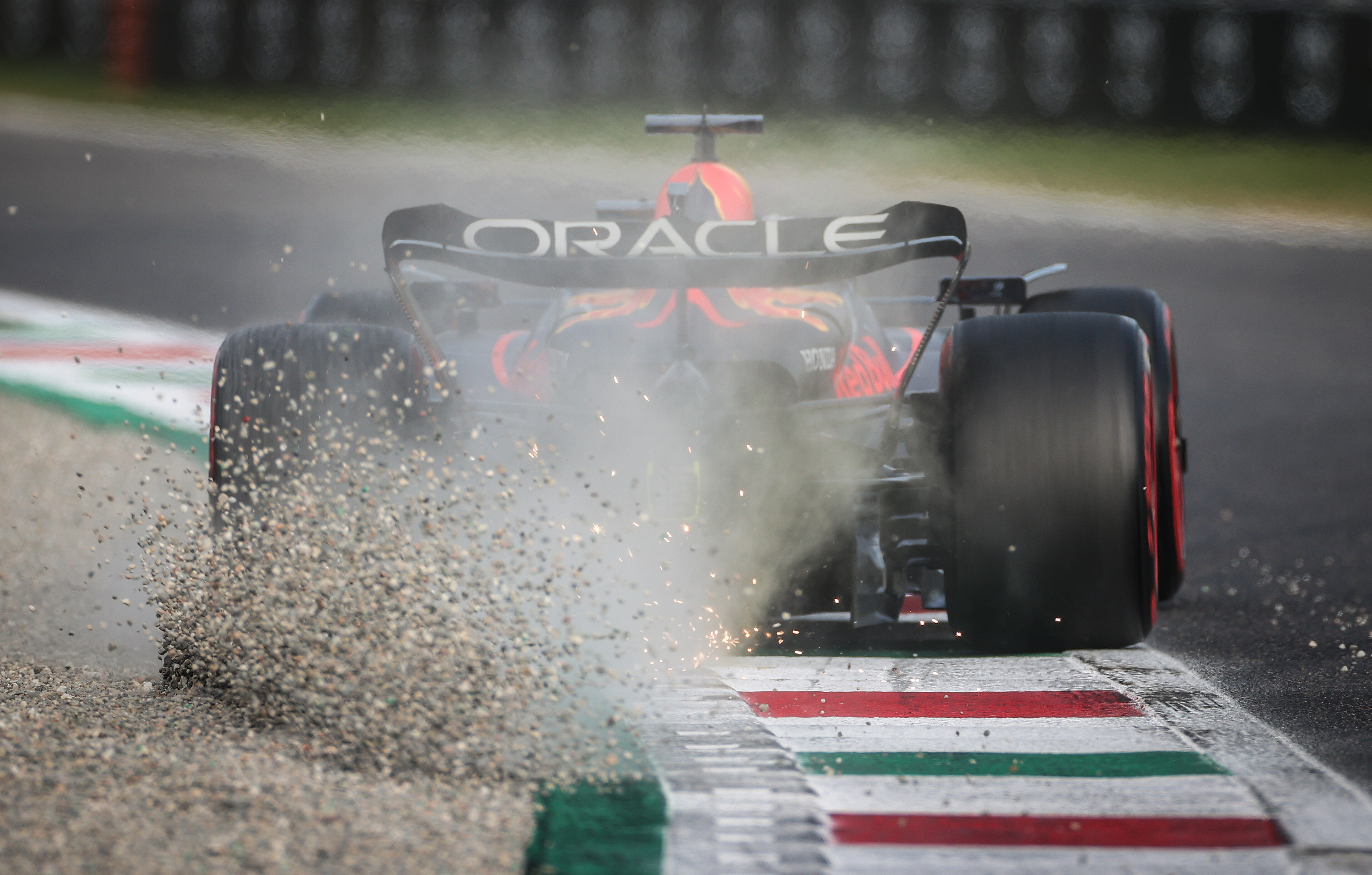
Red Bull arrived here with a choice of two much bigger wings than Ferrari. They were differentiated only by how much area the top flap carried. In FP1 Verstappen ran the bigger one, Perez the smaller (though even the smaller one was much bigger than that on the Ferrari). Verstappen was 0.177s faster over the lap. Which given the usual gap between them (it’s been around a quarter of a second to date this season) suggests that the low wing was probably faster over the lap – and certainly more raceable. Even the smaller of the Red Bull wings had them 7km/h slower on the straight than Ferrari. If they’d opted for the bigger one, it would have been more like 12km/h.
Ferrari was unambiguous in its wing level. But it wasn’t only wing choices which were keeping Red Bull preoccupied through the practices. The car just did not hit the track in its sweet spot this weekend. “Friday it was a bit tricky,” said Verstappen. “I can’t really complain because I’ve had so many weekends in a row when we put the car on the track and it was easy. But here it was a bit more difficult to find the right trade-off.
“But finally this morning we seemed to have good pace on both single lap and long run. At Monza you’re often just one side or the other of that trade-off.”
The hazard of Ferrari’s super-skinny wing strategy, of course, is that in requiring a cut away front wing flap in order to keep the car balanced, it will impose more wear on the left front.
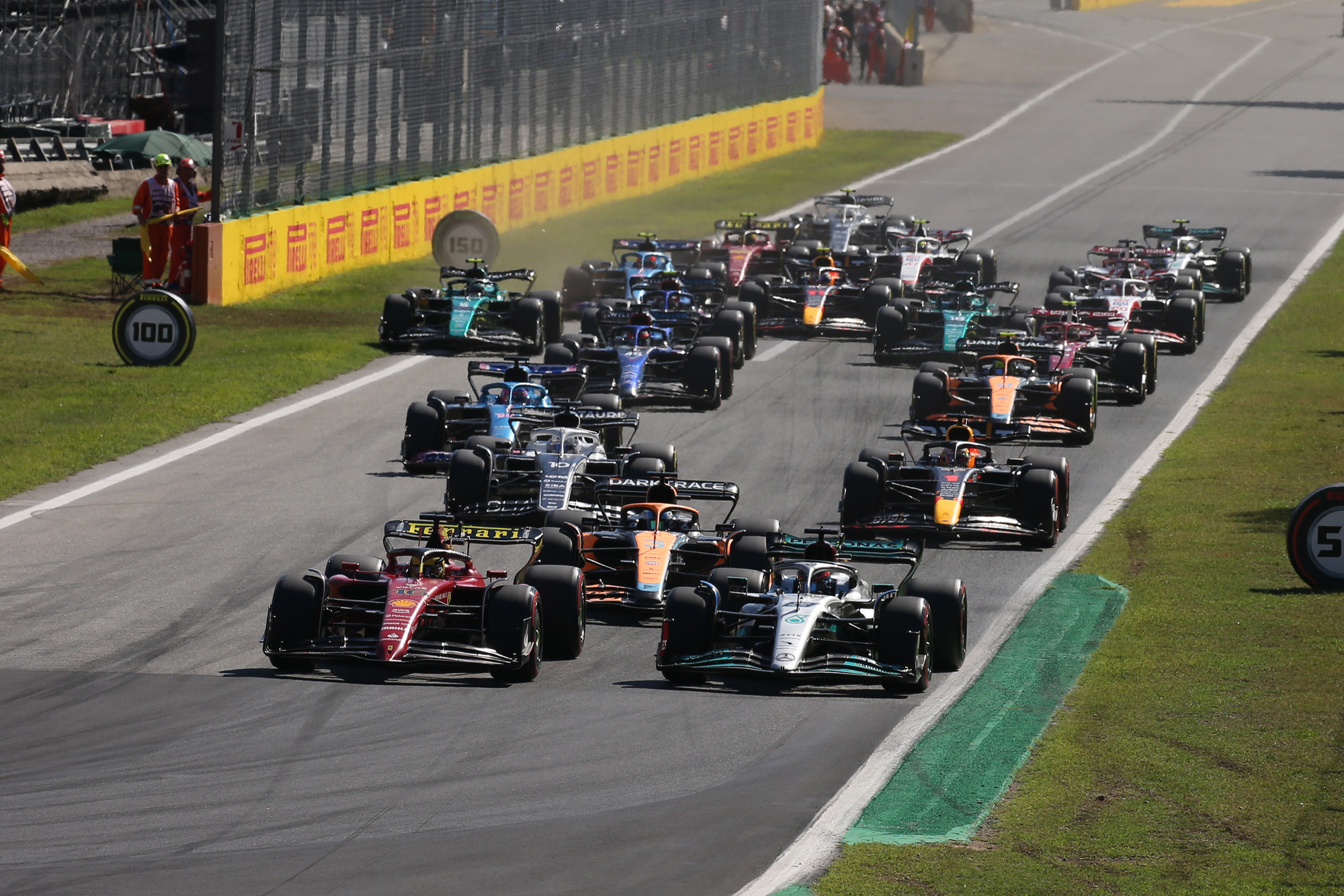
This is exactly what happened to Leclerc here last year after qualifying on pole. It obliged Ferrari to switch him to a two-stop strategy which is slower than the idealised one-stop Red Bull was able to use for Verstappen.
Is history about to repeat itself in this race? That’s just one of many ways Ferrari could lose the race.
Corner-by-corner breakdown
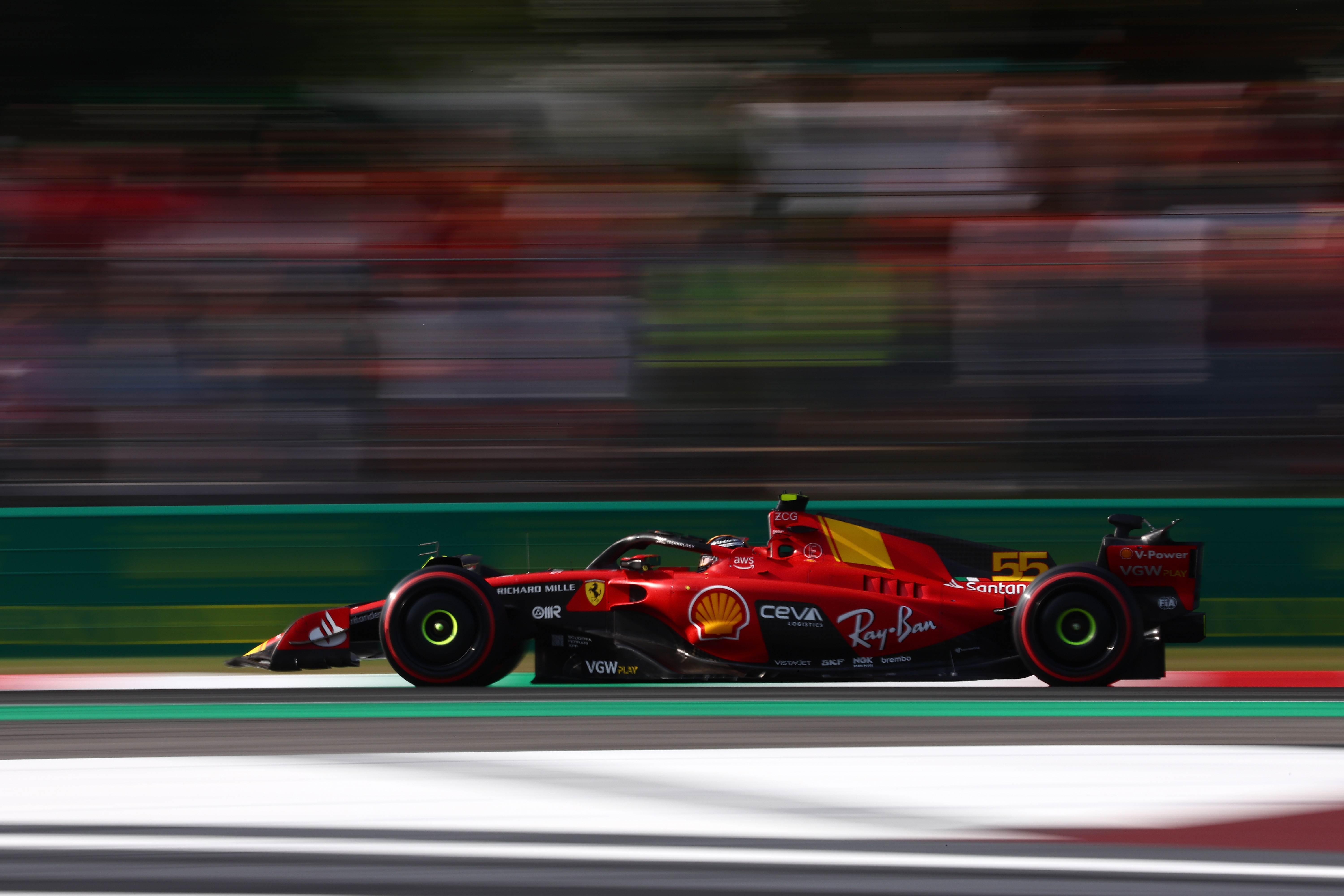
Start-finish to braking for Turn 1. The Ferrari reaches a terminal speed of 350km/h, the Red Bull 343km/h. They each then lose some of that speed as the deployment stops, even though they are still foot to the floor in top gear. By the time Sainz and Verstappen brake, they are doing 345km/h and 341km/h respectively. That run of straight gains the Ferrari 0.07s.
First chicane. Here we can see that the Red Bull’s usual slight reluctance to get its front tyres up to full temperature by the start of the lap gives it less rotation than the Ferrari. It’s visible from in-car; Sainz is able to take maybe half-a-metre more of the first kerb and so has an easier line of attack into the left-hand part, with less lock needed. Yet even though this gets him on a cleaner line on the exit, it’s Verstappen who has maintained a slightly higher mid-corner minimum speed and this gets him a better exit, putting him marginally ahead as they accelerate out of the corner towards Curva Grande.
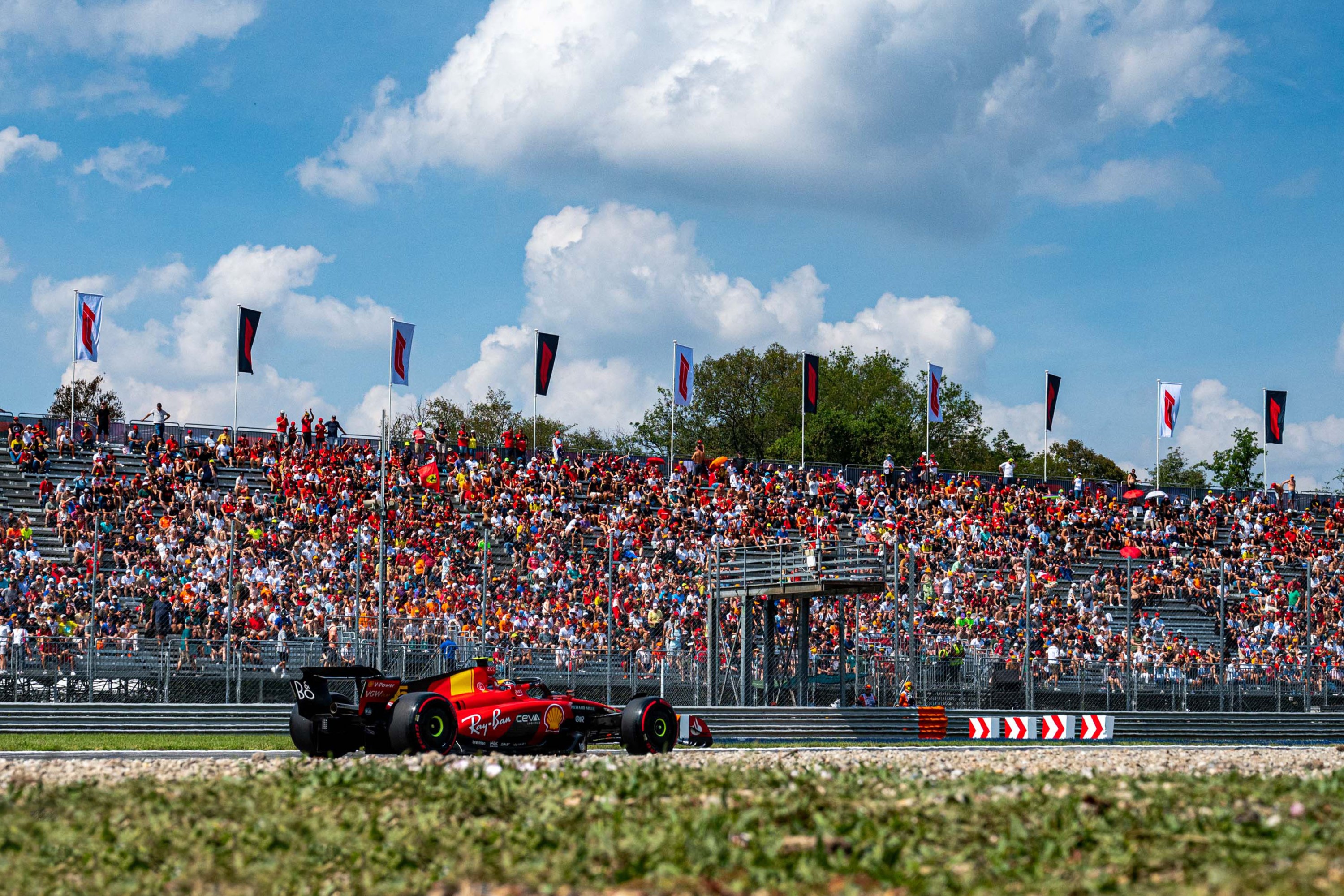
Between the first two chicanes. This flat-out stretch again favours the Ferrari’s lower-drag rear wing. The Ferrari’s speed before braking is 5km/h higher and Sainz is able to claw back all the advantage he had at the end of the previous straight.
Roggia chicane. The Red Bull appears still not to have its front tyres up to the optimum temperature and Verstappen has to take two bites into the first part of the left-right chicane. Again, the Ferrari has better rotation and Sainz needs less steering lock and doesn’t need the second bite on the steering. By the first apex, Verstappen is manhandling the consequences of that compromised entry and it gives him a less clean exit. As they accelerate out of there the Ferrari is now 0.178s ahead, a lot for so early in the lap. This gap remains almost constant on the short run up to the first Lesmo.
Lesmos 1 & 2. By now the Red Bull’s front end is finally working properly and Verstappen is able to match Sainz into and through the first Lesmo. He’s significantly later on the brakes for Lesmo 2 than Sainz and has better grip through there, Sainz even getting a snap of oversteer on the exit despite travelling around 5km/h slower than the Red Bull. Verstappen is less than 0.1s behind as they exit onto the run down to Ascari.
Between Lesmo 2 and Ascari. The Ferrari is travelling 5km/h quicker than the Red Bull by the end of this straight, extending Sainz’s advantage to 0.164s.
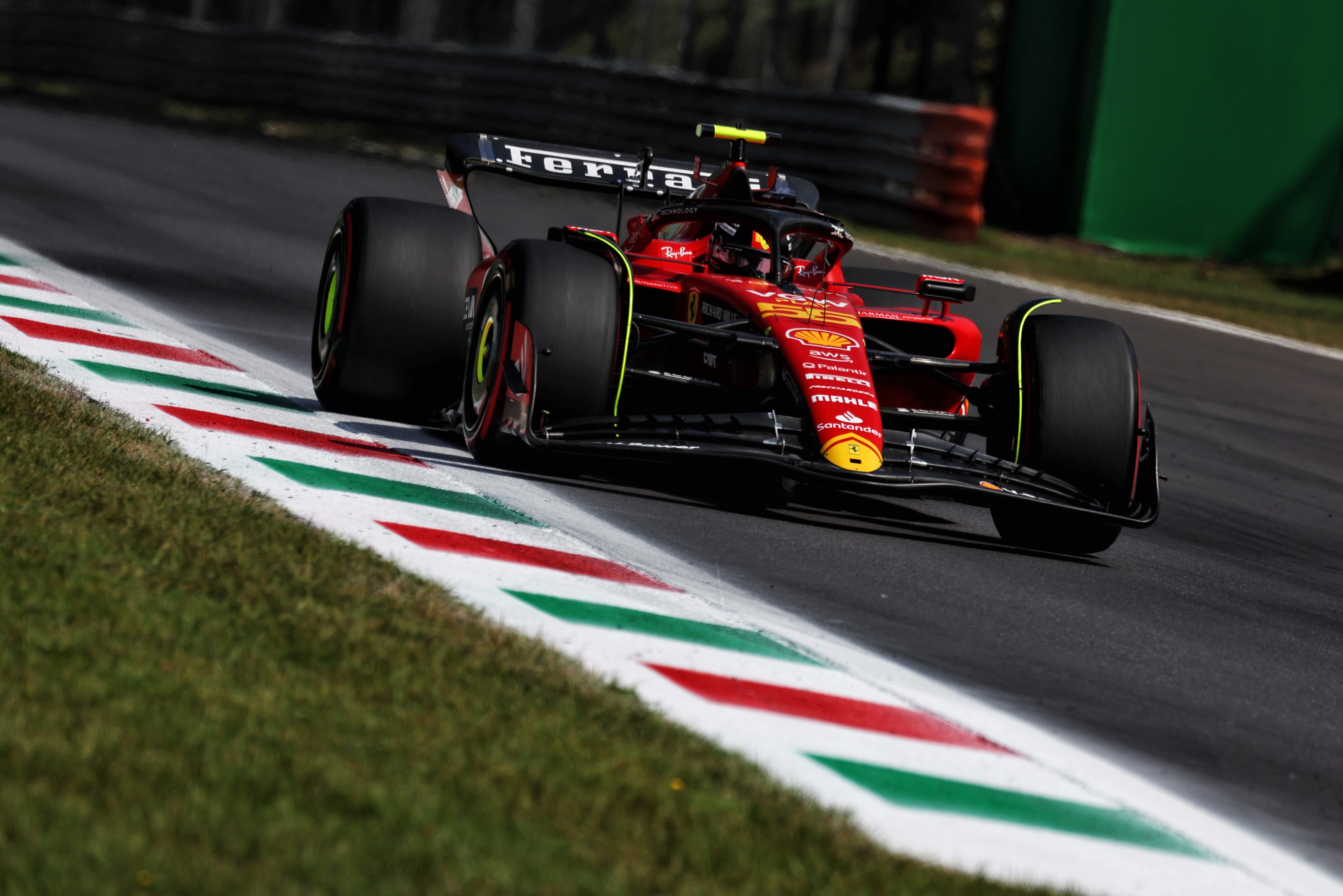
Ascari. Sainz is super-brave on the entry to Ascari. He turns in earlier, maintains the speed and then takes an outrageous amount of inside kerb. But Verstappen has more grip and even using less kerb can take the same speed through there. He even gains a little bit of time as they drive through the long looping right-handed part, then exit left on the straight, and this gets his deficit back down to 0.1s. This is maintained on the run down to Alboreto (the former Parabolica).
Alboreto. Sainz again gives it maximum commitment on entry here and the Ferrari’s rear end gets a little light, enough for Sainz to release a little bit of lock. The Red Bull’s grip advantage is really showing now and Verstappen is 9km/h quicker at the apex and looking much more planted. He gains time on the Ferrari all the way through the long corner and enters the straight faster. The start/finish line comes just a little bit too early for him as he’s still 3km/h quicker than the Ferrari as they reach it. That final spurt as the Red Bull really came good late in the lap brings him just 0.013s shy of pole.
Of course, there are ways this could play out with a Ferrari victory. Randoms can strike at any time. But realistically? No-one is looking very far past Verstappen.





